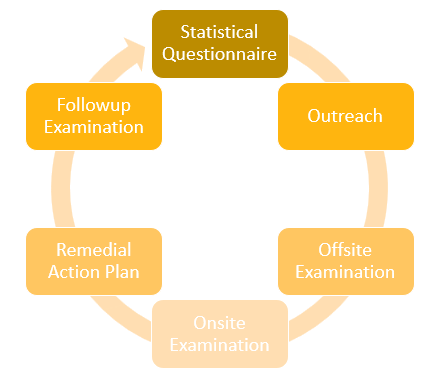The Supervisory Process

Statistical Questionnaire
Training and Outreach
Offsite Examination
One of the inspection tools which the FIU has at its disposal is the off-site monitoring tool which is a desk-based examination of key documents that provide an overview of the regulatee’s operations, money laundering and terrorism financing risks as well as its level of compliance with AML/CFT legal and regulatory obligations prior to conducting an onsite examination.
The list of documents and information requested in the Offsite Examination include:
- Business Information;
- List of Products/Services and Clients risk rating;
- Risk Assessment (Client and Business);
- AML/CFT Internal Controls, Policies and Procedures;
- Confirmation and documentary evidence of screening performed against the United Nations Sanctions Consolidated list; and
- Documentary evidence of record keeping such as registers of internal and external suspicious activity, Politically Exposed Persons, Beneficial Owner and Training.
Onsite Examination
Cycle:
The onsite examination is focused on aforementioned risk-based supervision plan which has a mix of high, medium and low risk rating. The focus is more prioritizing the high-risk entities posing high ML-TF risk ensuring full coverage throughout the yearly plan.
Conducting the examination:
The inspection is conducted with a minimum of two inspectors present physically onsite. The examination normally is conducted as per AML/CFT checklist having full coverage on the AML/CFT themes and focalised on the short comings found during the offsite monitoring examination. Further to examination, there is inspection of documents and records such as CDD documents and registers to ensure that compliance is being maintained throughout the course of regulatee’s business.
Reporting findings:
Subsequent to inspection and examination, deficiencies and shortcomings identified are reported through Inspection report that is for internal use and deficiency finding letter which is subsequently circulated to RPs.
